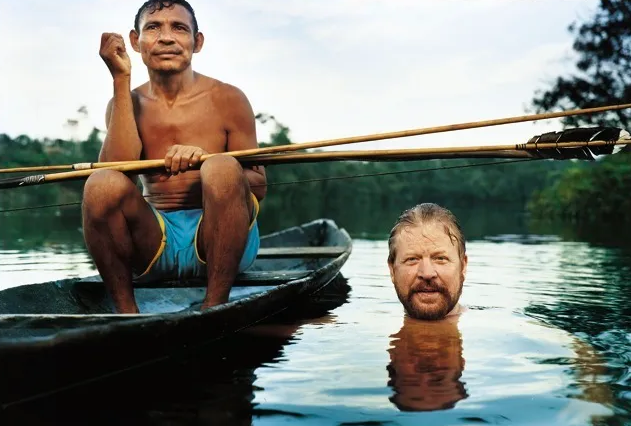In the past couple of years, my work has turned out to be quite controversial, much more so than I ever expected. In 2009, Language, the journal of the Linguistic Society of America dedicated about 100 pages to a discussion of my paper on the grammar-culture connection (Cultural Constraints on Grammar and Cognition in Piraha: Another Look at the Design Features of Human Language, in Current Anthropology, August-October, 2005).
There are two books and a documentary are now dedicated to this controversy and my emerging theory of language as a cultural tool. The documentary is The Grammar of Happiness (in the US this will appear on the Smithsonian Channel). This will include interviews with a number of prominent linguists, psychologists, philosophers, and others, as well as a lot of footage of me and the Pirahas in the Amazon. The books are Language: The Cultural Tool – from Pantheon in the USA and Profile in the UK, and Don’t Sleep, There Are Snakes. Another book, with my co-author, Dr. Jeanette Sakel, Linguistic Fieldwork: A Student Guide , in the Cambridge University Press “red series” (linguistic textbooks) discusses how to do field research, including how to study the interaction of culture and grammar.

I am currently working with Ted Gibson and Steve Piantadosi of MIT Brain and Cognitive Sciences to code a number of Piraha texts for machine-readability. Once this task is completed, we will put the texts on the internet, at least some of them, and ask for people to write grammars of different types. In particular we will want to evaluate recursive vs. non-recursive grammars of the data to see which type is evaluated most highly by a Bayesian inference model.
Another line of research engages the three researchers above, along with Evelina Fedorenko (MIT) and Mike Frank (Stanford), in on-going testing of Piraha numerical cognition and the evaluation of other claims of Everett (2005).
Caleb Everett and Keren Madora (formerly Everett) released a paper called ‘Quantity Recognition Among Speakers of an Anumeric Language’ based on completely new experiments with a different Piraha village in the January/February 2012 issue of Cognitive Science.